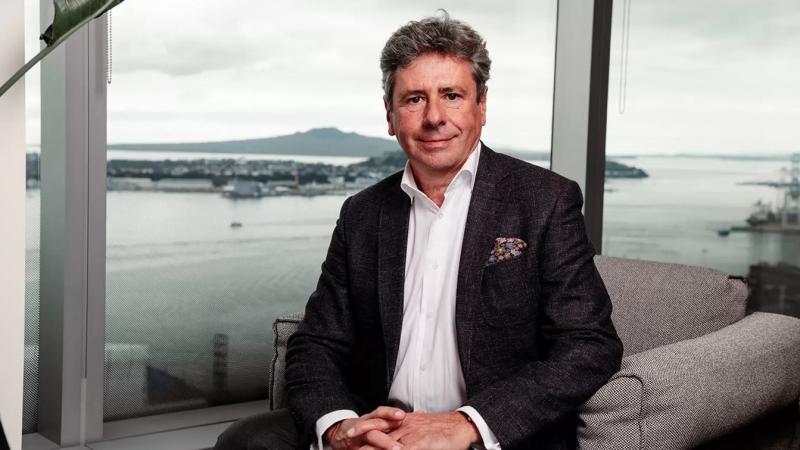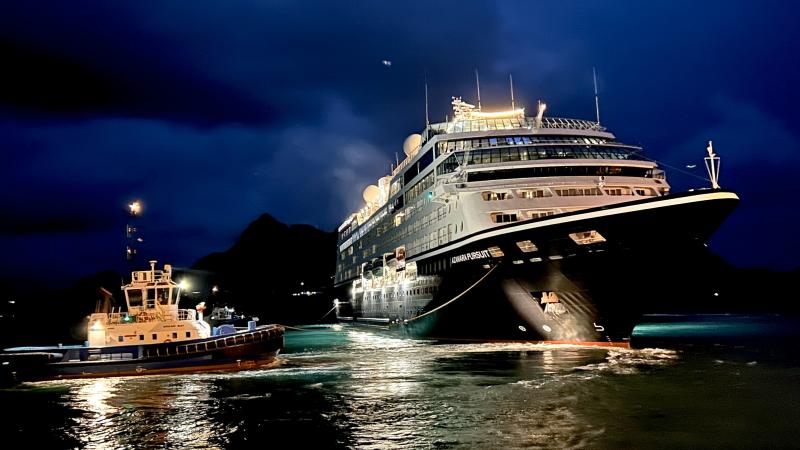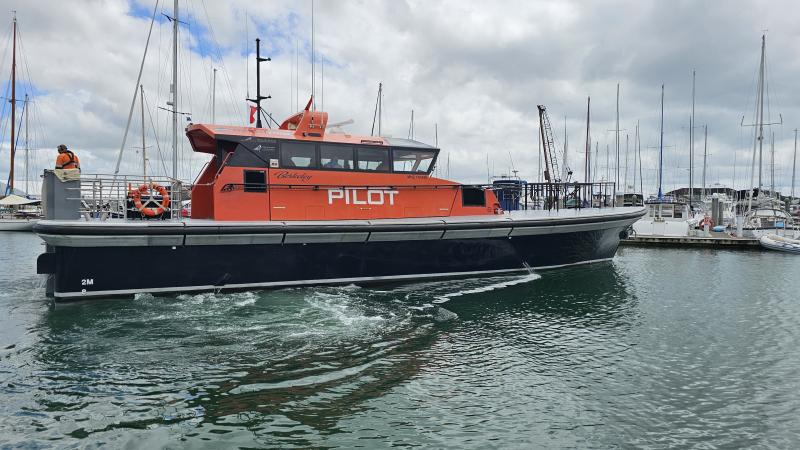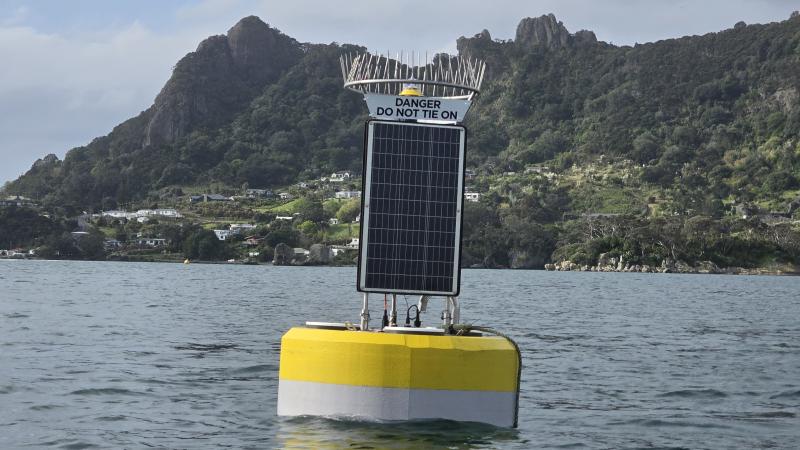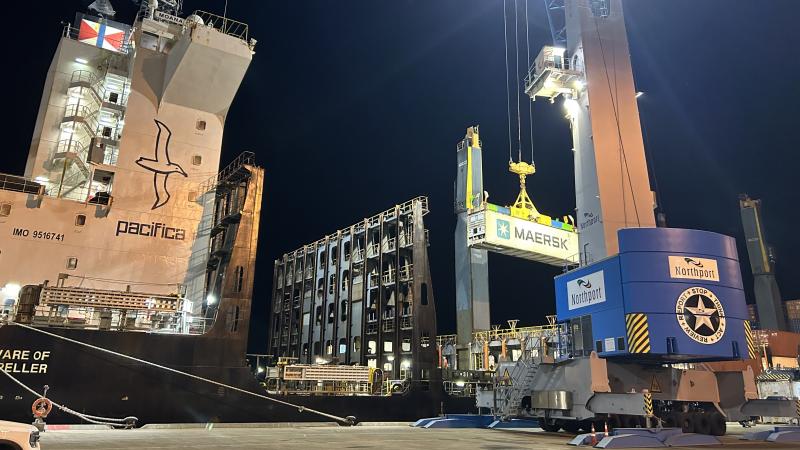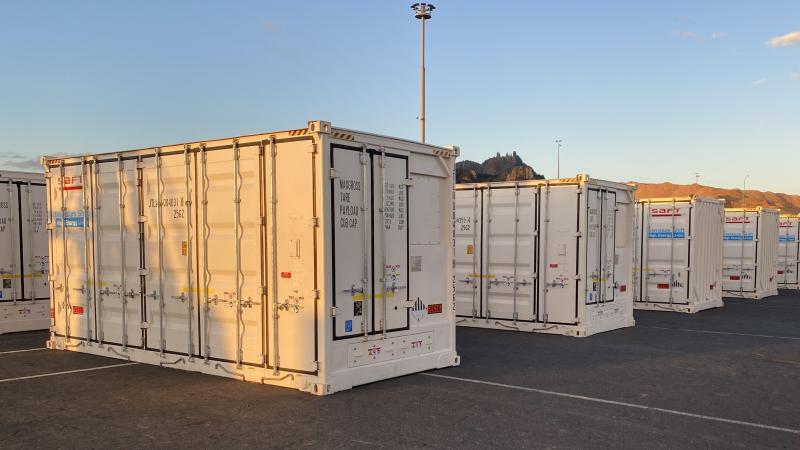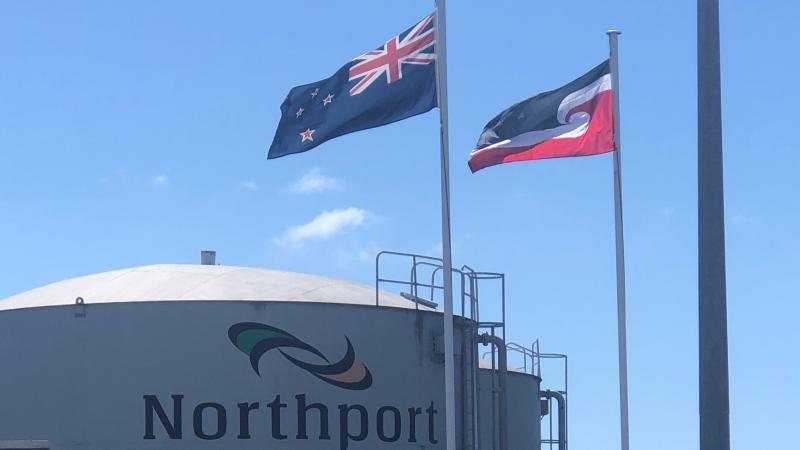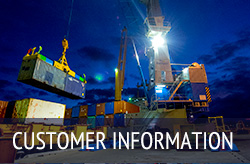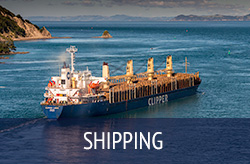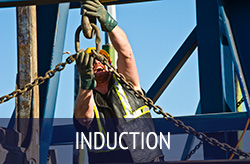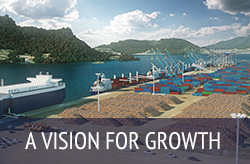NP234
Northport background information
Northport is situated at Marsden Point at the mouth of Whangarei Harbour. It is New Zealand’s northernmost deep-water port. It is a flexible facility catering for large, multi-purpose vessels and full cargo handling facilities are available from its 570m linear berth.
Logs, woodchip and processed timber for export comprise the bulk of cargo handled by the port. In recent years there has been an increase in coastal and international container trade. Other export items include kiwifruit, dairy products and manufactured goods. Imports are an important part of Northport’s business and include fertiliser, gypsum, coal and palm kernel.
Northport has lodged a resource consent application with both Whangārei District Council and Northland Regional Council to extend its linear wharf eastwards to create a container handling and storage area that will integrate with the proposed KiwiRail spur.
The company proposes extending the port’s linear berth by 520 metres to a total of 1,090 metres. While it already has resource consent for 270 meters of the proposed extension, modelling has made clear that this alone is not sufficient to cater for the projected growth in demand for container storage, handling and transportation at Northport.
This eastern development project would grow the total footprint of the port from 49.1 hectares to 66.95 hectares.
The port is owned and operated by Northport Ltd, itself owned jointly and equally by Marsden Maritime Holdings Ltd and the Port of Tauranga Ltd.
The back story
The Northland Harbour Board, the controlling port authority at the time, first proposed a port facility at Marsden Point in the late 1960s. It was not until 1976 that the proposal was moved ahead with the first of several environmental reports. The plan lost traction during the 1980s and it wasn’t until the Northland Port Corporation was formed in 1988 that it re-gained momentum.
Northland’s forestry industry was slowly increasing in production and was the catalyst for eventual construction. Final consents for a two-berth facility were finally granted and in 2000 the Northland Port Corporation (now Marsden Maritime Holdings Ltd) entered into a joint venture with the Port of Tauranga to form Northport Ltd.
Construction was started in 2000 and the first log-ship ship was loaded in June 2002. In 2004 consents were obtained for the construction of the third and fourth berths. Construction of the third berth started in late 2005 and was completed in October 2007.
In April 2007 Port Whangarei was closed to commercial shipping and all cargo operations were transferred to Northport.
Common user facility
More than 427 companies are registered for entry onto the port
- eight have offices here or are permanently on site, with approximately 300 staff between them (ISO, C3, ISL, Genera, North Tugz, Marusumi, SMW, Forest Loaders)
- three stevedoring operations, including Northport’s container handling service
- three marshallers, including Northport’s container and break-bulk marshalling
- 11 ship agencies
- five government agencies (MNZ, Customs, MPI, DHB and WorkSafe)
2,355 port users with active swipe cards
273,554 inward gate movements / 547,108 total gate movements (July 2022 - June 2023)
Average of 670 truck movements a day, based on a seven-day week
Only about 35 staff directly employed by Northport Ltd
Containers
Volume of container traffic increased from 820 TEU in 2016/17 to 32,125 TEU in 22/23
- About half kiwifruit exported from Northland leave from Northport, up from 25 percent in 2018/19.
- One-stop shop for importers and exporters; can receive and store cargo, pack and devan containers, provide VGM compliance certification, and load or unload cargo using our two mobile harbour cranes.
- More refrigerated containers being shipped through Northport; mainly kiwifruit and meat
Container handling: 2x Konecranes Gottwald Mobile Harbour Cranes
- Can serve container vessels up to post-Panamax class.
- First crane (100 tonnes) installed in April 2015; second (125 tonnes) in February 2020.
- Second crane increased productivity of dedicated container vessels using the port; provides resilience.
- In addition to containers, extends Northport’s flexibility in handling heavy project cargo.
Container handling: $8m infrastructure investment
- Additional container-handling equipment (4x reach-stacker container handlers, 1x dock-truck, 1x MAFI trailer).
- Simulator module to train staff in operation of container-handling equipment.
- Expanding paved area by 4ha to enable the port to reorganise storage, providing 6.35ha paved break-bulk / container storage.
- Upgrading lighting to enhance safety during 24-hour operations (six x 35m LED light towers).
- Terminal Operating System (TOS) and associated software to electronically interface with shipping lines and regulatory bodies
- Demonstrates commitment to growing container traffic to service both our region and north Auckland.
- Vote of confidence in continued economic growth around our region and across the Upper North Island.
Direct container service from Northport to Australia, Asia and Europe
Shipping lines MSC and CMA have extended their container services linking Northland with Australia, Asia and Europe via the Panama Canal.
MSC’s seasonal service to Asia, through Brisbane and Singapore, entered its fifth year in 2023. It is being used extensively by ZESPRI for Northland kiwifruit exports. It is also being used by exporters of other Northland products that benefit from the direct link and refrigerated container space.
CMA’s seasonal Panama service to Europe was introduced to Northport during the 2022 Kiwifruit export window; three calls left Northport on a trial basis. The uptake and service was good so frequency was increased in 2023, shipping hundreds of containers of high-value exports from the region direct to the East Coast of the US and Europe.
“These are valuable direct links to major export markets which Northland businesses can take advantage of. Although they’re seasonal services catering primarily for Kiwifruit exports they are also available to, and have been embraced by, a range of other sectors” - Northport commercial manager David Finchett.
Weekly coastal shipping container service linking Marsden Point with Tauranga, Auckland and Lyttelton
This was introduced by Pacifica Shipping in Q1 2024, enhancing the fortnightly service that had been in place since 2016.
Northland exporters can have their containers loaded at Northport and just over 12 hours later the ship will be in Tauranga, from where there are daily connections available to almost anywhere.
This service also helps Northland importers, and those who want to move freight within New Zealand. This option bypasses any State Highway 1 detours, Auckland traffic and the Cook Strait.
This significant move by Pacifica gives shippers more options to reduce their carbon footprint and improve supply chain resilience and efficiency.
Cruise
Northport is working with its partners Whangarei District Council, Northland Inc and Northland Chamber of Commerce to build Whangarei Cruise over the next five years (2024-2029).
Northport welcomed its first cruise ships in February and March 2024. First to tie up at Northport on Sunday February 4 was the cruise ship ‘Regatta’ with about 604 passengers on board. Significantly, all but 11 of her passengers chose to go ashore to experience what Whangārei and the district have to offer.
‘Regatta’ called again on Thursday 22 February, this time with 611 passengers, and was followed on Thursday 7 March by the smaller ‘Seven Seas Navigator’ with 311 guests on board.
Simulation, training and port development capability
Ship simulator
Training options for the New Zealand marine services sector have broadened considerably thanks to a ship simulator and training facility we have established on site at Northport. It can be used for a wide range of maritime training programmes and gives operators options beyond sending staff to Australia for training and aptitude testing, or enduring long waits for training windows in New Zealand. The simulator replicates the environment on the bridge of a ship or tug, or in a local port service centre.
The facility can be configured to simulate any port in New Zealand. It enables pilots, tug-masters, and local port service operators to train and prepare for changes to their operating environment such as the development of new berths or changes to channels and turning basins. We are currently reviewing proposed navigation aid changes in the Upper Whangarei Harbour.
The system can also be used as part of a port’s emergency response training.
We are offering a range of training courses for up to six people at a time. These include Local Port Services courses; pilot professional development and annual assessment; bridge resource management and error management; PPU training; and tugmaster and bargemaster training.
Port operations and design
Our ship simulator has been an important tool in helping us to plan and prepare for large container ship calls at Northport in recent months. We use the equipment to examine, as part of the overall risk assessment, the effects on these ships of significant environmental occurrences here at the port.
For instance, as part of the planning for the arrival of the 261m ‘Constantinos P’ we simulated thunderstorm activity with associated heavy rain, reduced visibility and winds gusting up to 50 knots.
In addition to helping us with our own operations here at Northport the simulator has expanded significantly the planning options available to other port operators and the New Zealand marine service sector generally. It is available for organisations around the country to model any port’s expansion and evolution, giving them the ability to project and study the feasibility of any proposed changes to a port’s design or operating environment.
It will show the impact on navigation of changes to berths, changes to shipping channels and improvements in navigational aids. It can be adjusted to consider any changes to the port, or the use of differing ship types such as container ships, bulk cargo ships, car carriers and cruise liners.
We undertook a feasibility study around the construction of a dry dock for the country’s marine industry as part of our Vision for Growth planning exercise. We used the simulator to test and prove the concept, along with different options for configuration and location. Vessel movement, turning capabilities, tug operations and other factors were tested extensively against many variables and in many different operating conditions.
We also used it in our investigation into how to future-proof the upper North Island vehicle import industry with a potential new business model. This would see cars discharged from vessels directly to purpose-built storage, vehicle preparation and distribution facilities immediately outside the port. All in a single movement. We used the simulator to model and prove the seaward-side operations.
Crane and container-handling simulation
We can also provide crane operator training and aptitude testing with a separate CM Labs mobile harbour and ship-crane simulator. Following recent investment in container-handling equipment Northport also provides reach-stacker simulation training module for its operators.
Marsden Maritime Holdings land holdings

Northport 50 percent shareholder Marsden Maritime Holdings Ltd owns 65 hectares of land at Marsden Point which abuts directly onto Northport’s boundary. These land holdings are available for lease to companies wishing to make use of the Northport facility.
It also owns 120 hectares behind this area, zoned for port or industrial use and available for long-term lease to companies wanting to make use of the port. Off-highway access to Northport is available from this area, meaning that normally overweight loads can be transported directly from a site to ship’s side.
In all, there are about 700 hectares of land available for commercial and industrial development at and around Marsden Point - more than twice the area of the Auckland CBD.
Marsden Point has a lot to offer businesses wanting to relocate from places like south Auckland, specifically good transport links, abundant and relatively inexpensive space, no congestion and enviable lifestyle options for employees.
Northport is a key enabler in the Whangarei District Council’s plan to realise the industrial, commercial and residential potential of the area.








